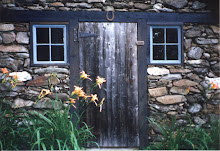The terrible habit of theater.
Respect man's nature without wishing it more palpable than it is.
The ejaculatory force of the eye.
My movie is born first in my head, dies on paper; is resuscitated by the living persons and real objects I use, which are killed on film but, placed in a certain order and projected onto a screen, come to life again like flowers in water.
To create is not to deform or invent persons and things. It is to tie new relationships between persons and things which are, and as they are.
Radically suppress intentions in your models.
Shooting. Put oneself into a state of intense ignorance and curiosity, and yet see things in advance.
Passionate for the appropriate.
A whole made of good images can be detestable.
The noises must become music.
Your film — let people feel the soul and the heart there, but let it be made like a work of hands.
Don't run after poetry. It penetrates unaided through the joins (ellipses).
Someone who can work with the minimum can work with the most. One who can with the most cannot, inevitably, with the minimum.
Unbalance so as to re-balance.
Montaigne: The movements of the soul were born with the same progressions as those of the body.
Not artful, but agile.
Be the first to see what you see as you see it.
Dig into your sensation. Look at what there is within. Don't analyze it with words.Translate it into sister images, into equivalent sounds. The clearer it is, the more your style affirms itself (Style: whatever is not technique.)
Practice the precept: find without seeking.
Corot: One must not seek, one must wait.
The persons and the objects in your film must walk at the same pace, as companions.
It is in its pure form that an art hits hard.
Retouching the real with the real.
Cut what would deflect attention elsewhere.
Don't show all sides of the objects. A margin of indefiniteness.
The actor is double. The alternate presence of him and of the other is what the public has been schooled to cherish.
Make the objects look as if they want to be there.
I remember an old film: Thirty Seconds Over Tokyo. Life was suspended during thirty wonderful seconds, during which nothing happened. In reality, everything happened.
Ten properties of a subject, according to Leonardo: light and dark, color and substance, form and position, distance and nearness, movement and stillness.
Telephone. His voice makes him visible.
Bach at the organ, admired by a pupil, answered: "It's a matter of striking the notes at exactly the right moment."
These horrible days — when shooting film disgusts me, when I am exhausted, powerless in the face of so many obstacles — are part of my method of work.
One ought to be born with a special sense for reconciliation and harmony.
The things we bring off by chance — what powers they have!
selected from NOTES ON CINEMATOGRAPHY
ROBERT BRESSON
translated Jonathan Griffin
(Urizen, 1975)
Bresson:stkarnick.com








































